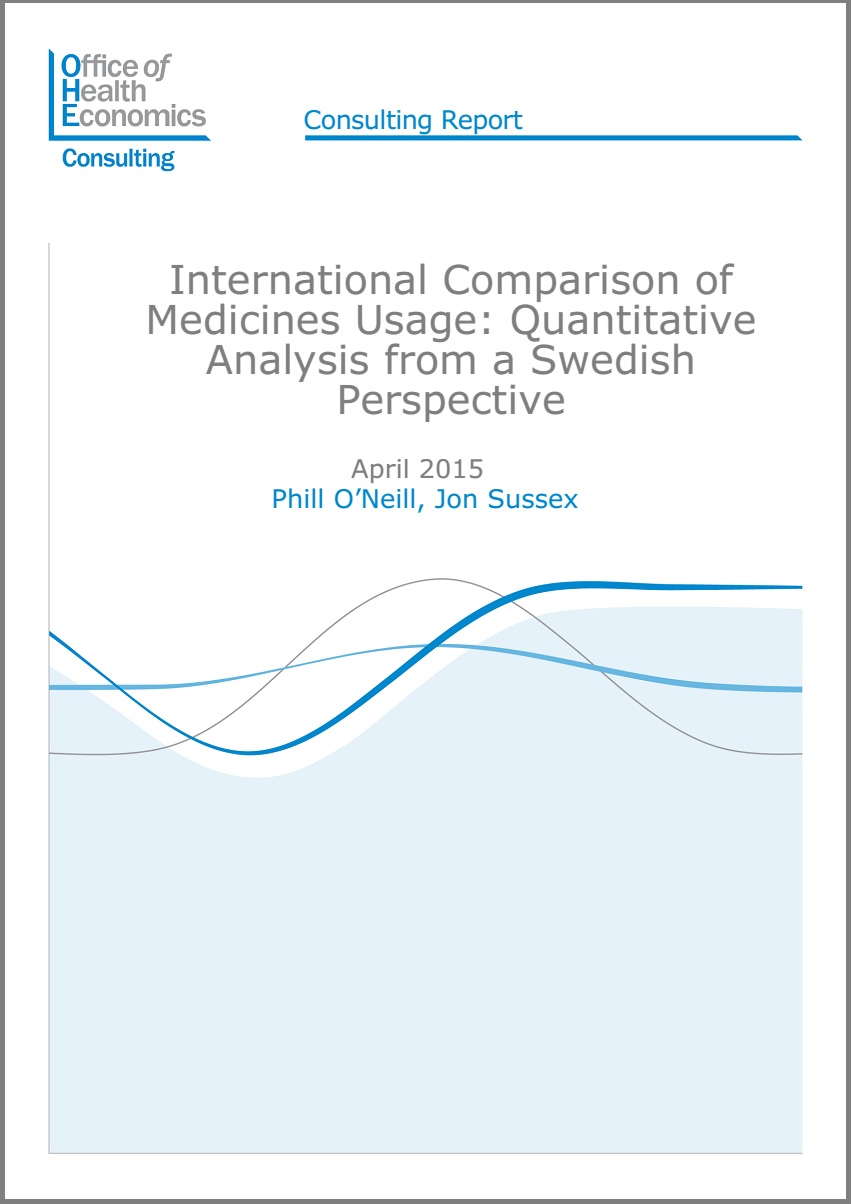The OHE undertook an analysis of the uptake of medicines in 13 high income countries. The UK perspective on this was published in November 2014 by…
The OHE undertook an analysis of the uptake of medicines in 13 high income countries. The UK perspective on this was published in November 2014 by the ABPI. OHE has been commissioned by LIF, the trade association of the pharmaceutical industry in Sweden, to reanalyse the international comparison of medicines uptake from the Swedish perspective; and the results are available here and on LIF’s website.
The OHE undertook an analysis of the uptake of medicines in 13 high income countries. The UK perspective on this was published in November 2014 by the ABPI. OHE has been commissioned by LIF, the trade association of the pharmaceutical industry in Sweden, to reanalyse the international comparison of medicines uptake from the Swedish perspective; and the results are available here and on LIF’s website.
The OHE undertook an analysis of the uptake of medicines in 13 high income countries. The UK perspective on this was published in November 2014 by the ABPI and is available here. OHE has been commissioned by LIF, the trade association of the pharmaceutical industry in Sweden, to reanalyse the international comparison of medicines uptake from the Swedish perspective; and the results are published here and on LIF’s website.
In summary, the picture of Swedish usage is mixed across the different classes of medicines. In a majority of classes usage is below the two international averages. But while, for example, usage of cardiovascular medicines is low by international standards, use of cancer medicines in Sweden is close to or above the international level.
- In 2012/13 Sweden’s overall ranking across all of the medicines studied for usage per person remains 12th out of 13 high income countries;
- Swedish usage per person is below the international average in 2012/13 for 10 out of 18 classes of medicines, and at or above the international average in eight;
- For two new sub-classes of medicines – novel oral anti-coagulants and protease inhibitors for hepatitis C – Swedish usage in 2012/13 is 34% and 80% respectively of the average of all the comparator countries;
- Results for two classes of medicines – HIV and diabetes – where there have been the greatest sales of newly launched medicines internationally in the last few years are also presented. Swedish usage of HIV medicines are a little over half the average of comparator countries. For diabetes, usage of medicines in new classes is 18% of that in the comparator countries; a third above the international average of comparator countries for insulins; and 40% of the international average for older diabetes medicines.

